Published Nov 15, 2023
The 'Fall' of a Season: Environmentalism in Star Trek
As autumn progresses, we're looking at Trek's most environmentally prescient moments.

StarTrek.com
When Jake Sisko revealed his plans to attend the Pennington School for the fall semester in the alternate future depicted in ’s “,” the burgeoning author offered us hope that the weather-related term fall will still be in use by the 24th Century.
In the here and now, the autumnal season’s place as an equal among the four seasons and a buffer between summer’s warmth and winter’s icy conditions may be coming to an end. Increased levels of carbon dioxide in Earth’s atmosphere tend to delay leaf fall, while rising global temperatures prompt those same leaves to sprout much earlier in the spring than expected. As a result, autumn’s traditional influence on the calendar has diminished, even if our love of pumpkin spice has not.
Star Trek tackled sentient species’ detrimental impact on the galaxy in numerous episodes and films, so let’s examine these environmentally-conscious entries and determine how they correspond to our own predicament.
“,”
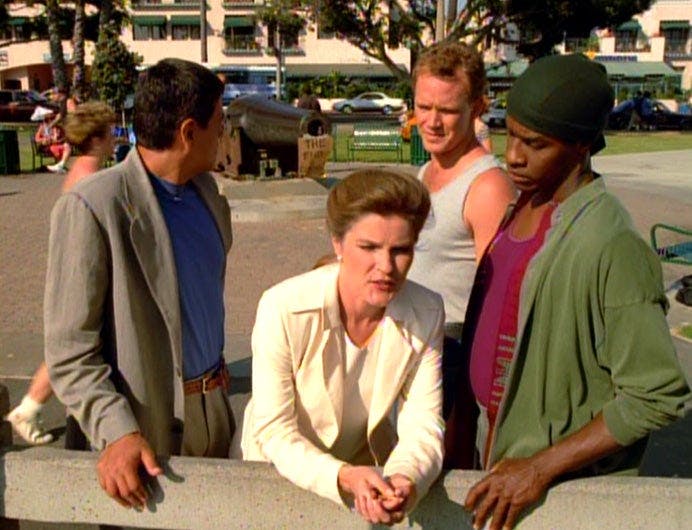
"Future's End"
StarTrek.com
“Future’s End” juxtaposed Tuvok’s observation of an on-going crisis from the present with the potential for future natural disasters that could alter the North American continent’s shape.
The time-travel two-parter found U.S.S. Voyager’s crew navigating their way through the year 1996. Tuvok made reference to high levels of thermal and ultraviolet radiation that emanated from the sun and penetrated Earth’s atmosphere. Chakotay mentioned that an earthquake in 2047 caused California’s southern region to sink below sea-level.
The correlation between climate change and seismic activity aside, coastal flooding due to heightened ocean waters has displaced entire communities and become a significant concern around the globe in our current time.
“,”
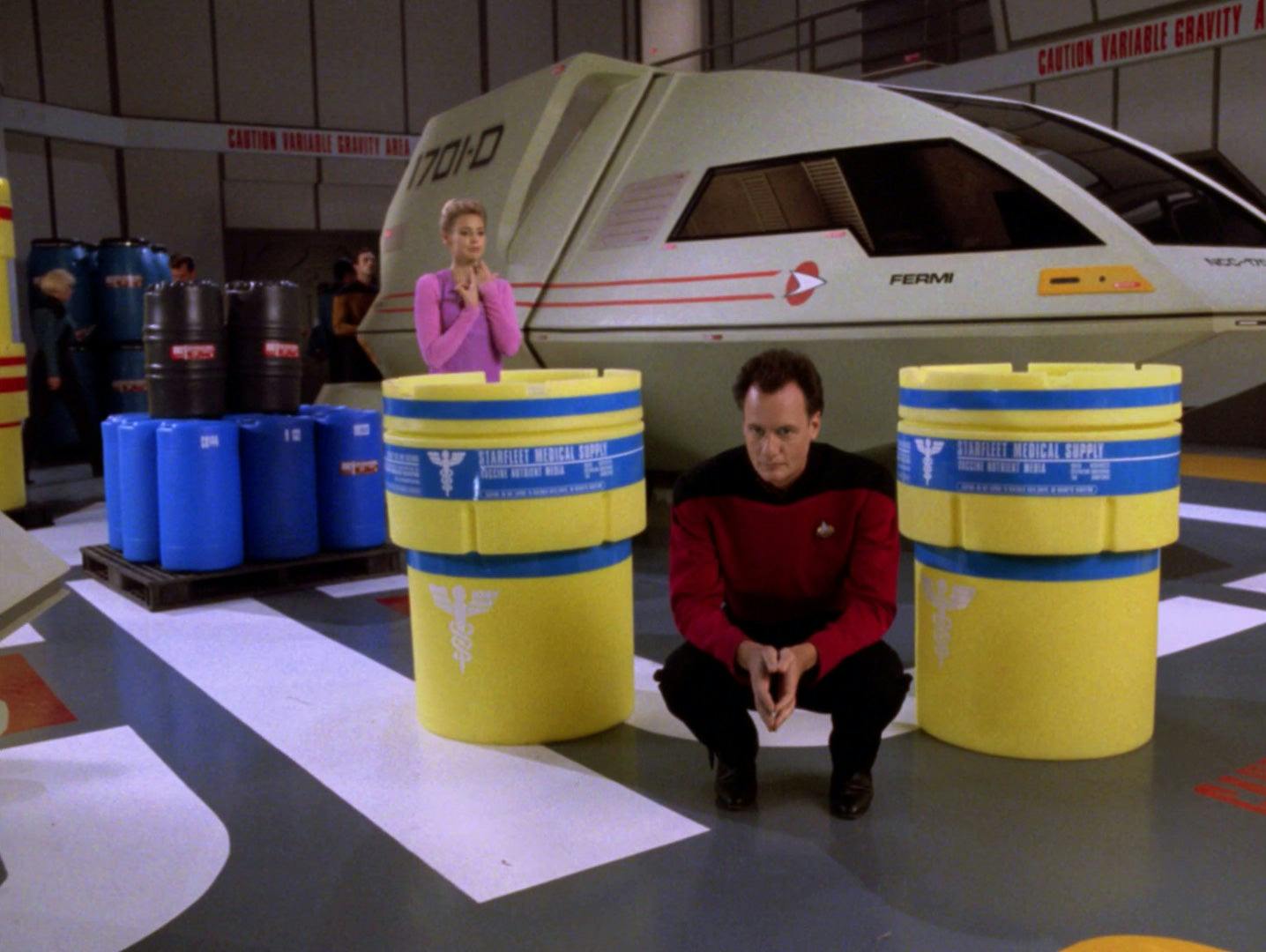
"True Q"
StarTrek.com
The U.S.S. Enterprise-D embarked on a relief mission to help the Tagrans, who polluted their homeworld to the point that they deployed atmospheric filters simply to stop the situation from intensifying. Amanda Rogers contemplated the situation on Tagra IV and commented, “It's amazing to think that they go to such lengths to clean the air instead of regulating the emissions that cause the problem.”
The not-so-subtle reference clearly alluded to the issues plaguing Earth, with the Tagran crisis representing a worst-case scenario for our planet. Nevertheless, the prevailing message that halting climate change from advancing further ranks as an easier task than reversing catastrophic harm already done to our environment still rings true today.
“,”
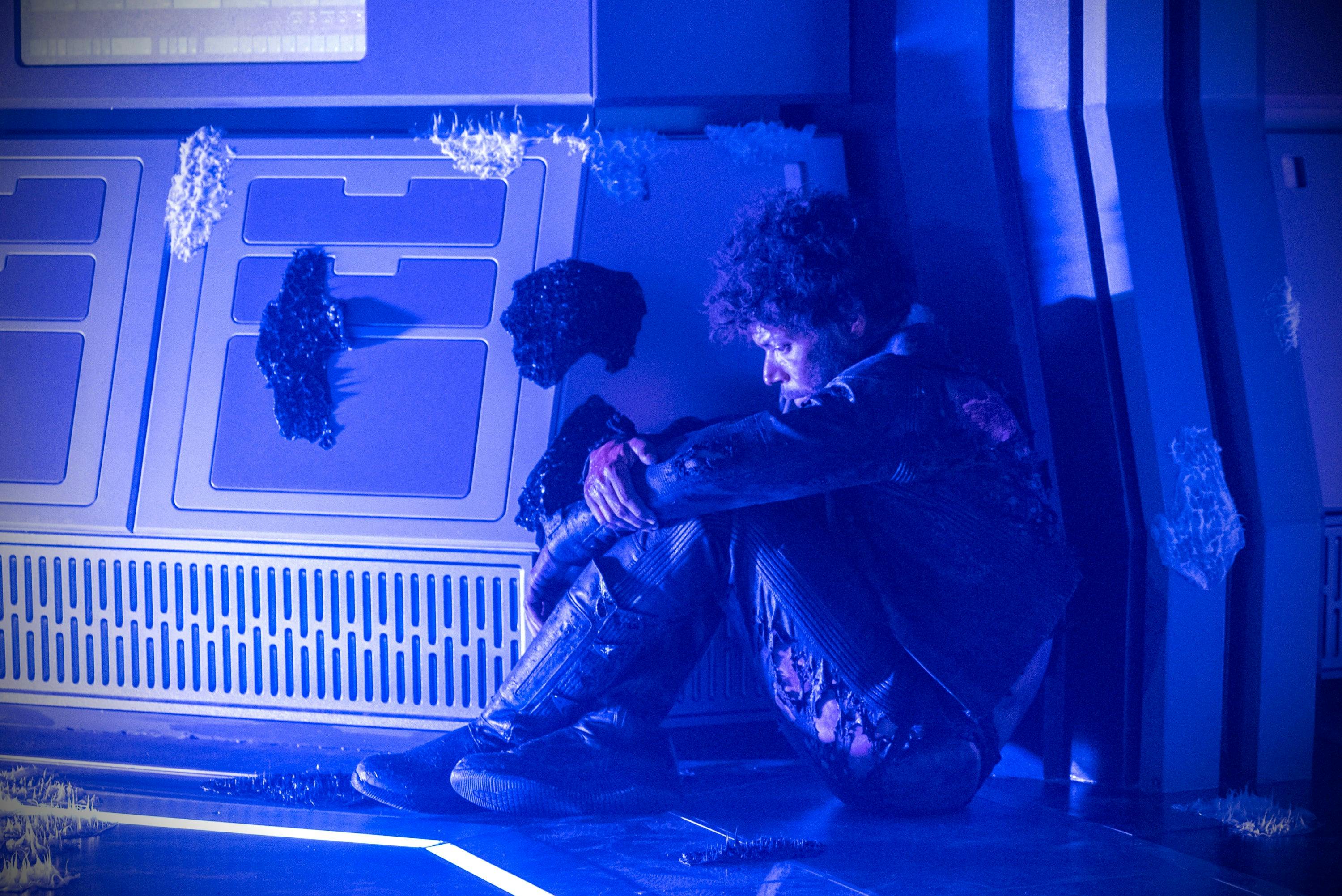
"Saints of Imperfection"
StarTrek.com
The jahSepp who took the form of May Ahearn became concerned about her home environment — the mycelial network — when an entity began devastating the realm. The "monster" that May feared turned out to be a reborn Hugh Culber, who prevented the jahSepp from breaking down his body by covering himself with the yeel tree’s bark.
Unable to consume Culber’s matter, the jahSepp fought back as the doctor’s presence inadvertently ravaged their ecosystem. The introduction of an unnatural element proved fatal to the jahSepp and spurred conflict, just as the mass migration that climate change produces can incite hostilities as it places a strain on valuable resources such as food, water, and habitable land.
“,”

"Force of Nature"
StarTrek.com
This episode offered a fascinating comparison between the toxic emissions released by automobiles and newly-discovered repercussions of warp drive. Warp travel created instabilities in the Hekaras Corridor which isolated Hekaras II from the rest of the Federation and negatively affected the planet’s climate.
The Federation’s initial hesitance to accept the claims of Hekaran scientists paralleled the reluctance shown by our political leaders to take immediate action and reduce the number of harmful substances released into the atmosphere. The Federation Council issued a decree that limited travel in areas of space that seemed susceptible to the instabilities and set a maximum speed limit of Warp 5 for all Starfleet vessels, just as current governments authorize regulations on car manufacturers to slow the tide of pollution.
“,”
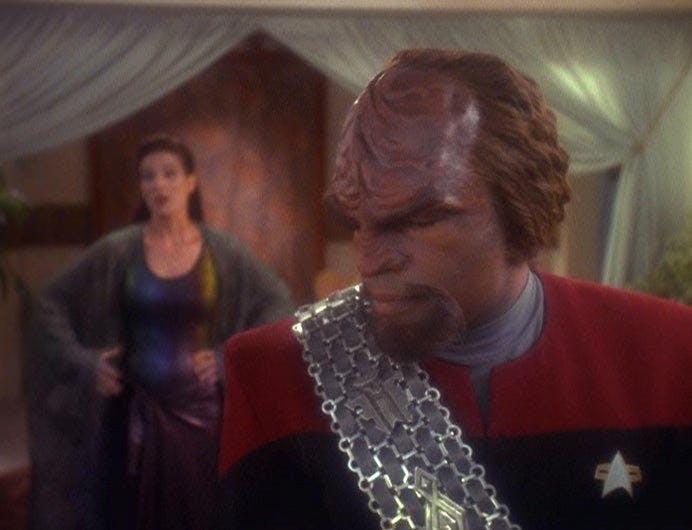
"Let He Who Is Without Sin"
StarTrek.com
A tropical haven for weary Starfleet travelers, Risa relies on planet-wide weather control systems and seismic regulators to transform its naturally rainy environment and geologically unstable surface into a paradise.
"Let He Who Is Without Sin" saw Worf aid the New Essentialists in their efforts to disable Risa’s fail-safes and demonstrate the Federation’s vulnerability to the Dominion and other rival powers. In The Next Generation’s "True Q," Captain Picard also referred to the presence of a weather modification net that dissipated deadly tornadoes as they formed on Earth.
As conditions continue to worsen in the 21st Century, the development of artificial systems such as these may be the only way to repair the damage that humanity inflicts upon our planet. Seeding clouds with chemicals to increase precipitation is a modern, controversial variant of this technology.
“,”
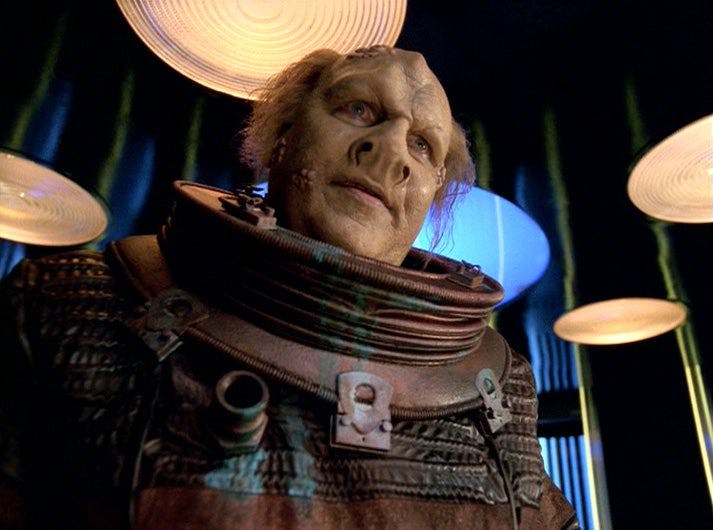
"Night"
StarTrek.com
Seeking a cheap and convenient way to dispose of anti-matter waste, a Malon freighter willingly contaminated a desolate region of space and exposed the local inhabitants to theta radiation poisoning. After learning about Starfleet’s process for safely recycling antimatter, the Malon captain still refused to use the technology as he feared it would ruin his business.
The presence of massive landfills and a growing population have led our own society to ramp up its recycling efforts, but corporate interests and the bottom line fiendishly manipulate the actions of government officials. Residents in Flint, Michigan were subjected to lead in their drinking water when their leaders opted to save money and utilize the industrial pollutant-filled Flint River to supply the life-giving liquid. Much like the aliens that Voyager encountered in the void, Flint’s innocent civilians are now facing a lifetime of health issues that stemmed from political expediency and greed.
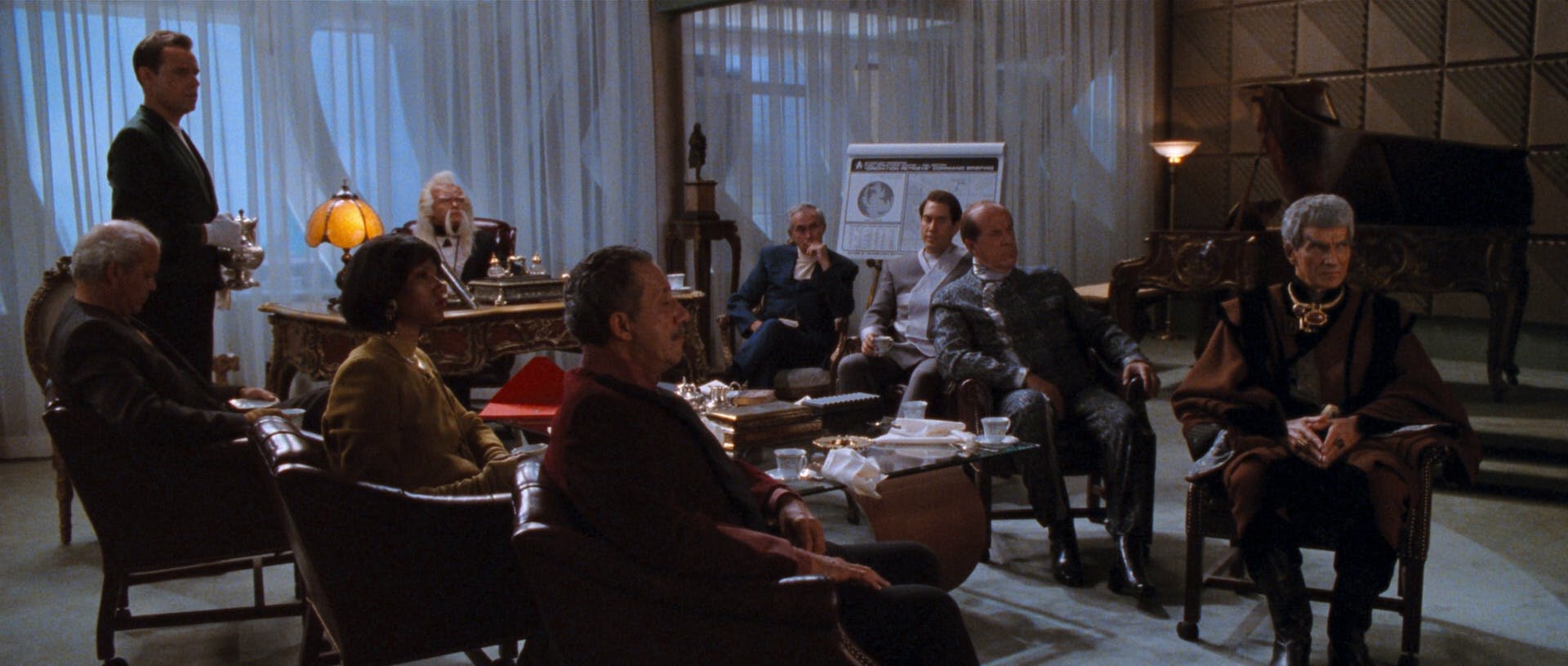
Star Trek VI: The Undiscovered Country
StarTrek.com
When over-mining and insufficient safety protocols generated an immense explosion on the moon of Praxis, Spock estimated that the resulting pollution would deplete the air supply on Qo’noS within 50 years.
The United States’ reliance on fossil fuels — coupled with the lobbyists who encourage politicians to promote the continued use of those finite resources — sends many American workers into the dangerous and unhealthy confines of coal mines. While our nation’s endeavors could not initiate a disaster of Praxis’ magnitude, the process poses a threat to the surrounding land, air, and even the miners themselves. In addition to countless accidents that have plagued the profession, almost an entire town in Centralia, Pennsylvania was evacuated when an abandoned mine caught fire. Still raging after nearly 60 years, the underground inferno may continue to burn for centuries.
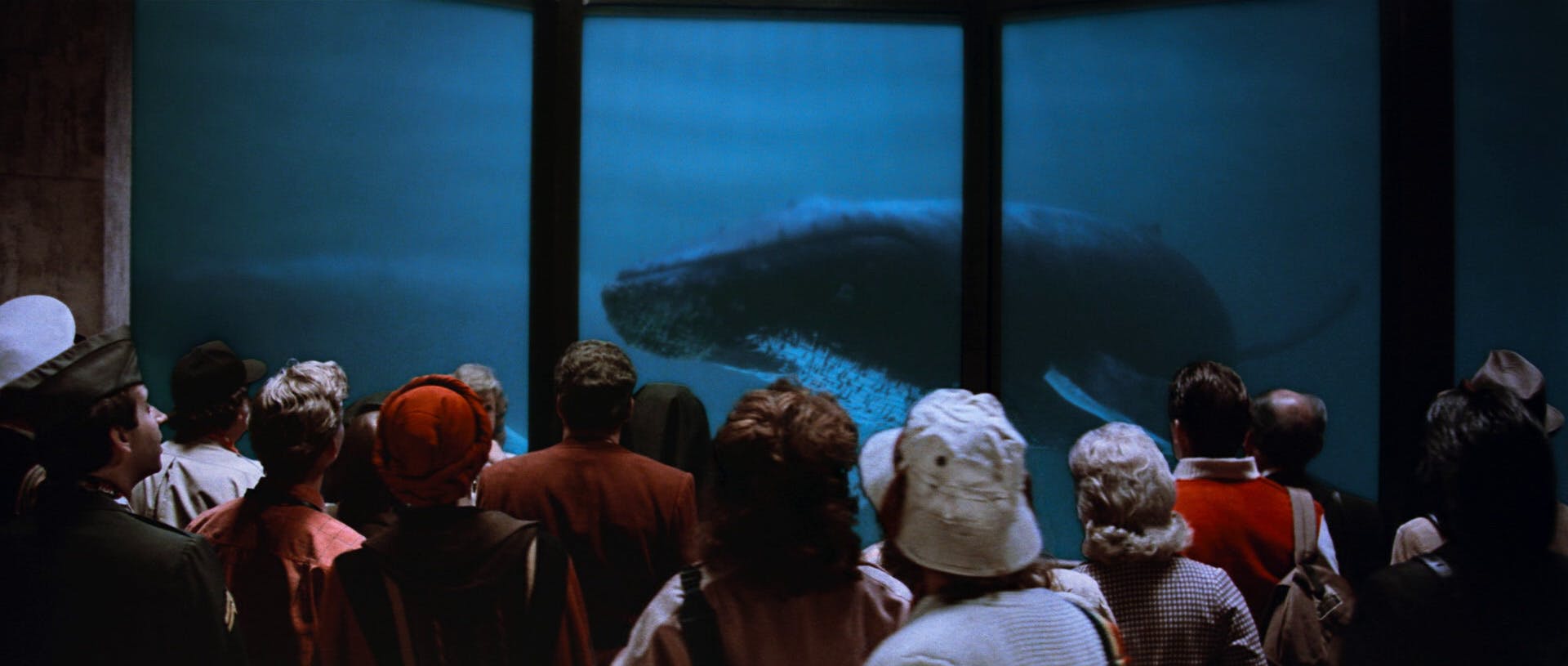
Star Trek IV: The Voyage Home
StarTrek.com
As Spock questioned the logic of hunting a species to extinction, Dr. Gillian Taylor replied, “Whoever said the human race was logical?”
The fourth Star Trek film predicted that such a fate would befall Earth’s humpback whales by some point in the 21st Century. Humanity’s ability to employ our technological prowess to wreak havoc upon the animal kingdom is well-known, and our society demonstrates an uncanny knack for consuming Earth’s other natural resources at an alarming rate.
A trend toward purchasing reusable containers and recycling old materials stands as a sign that we are aware of the problem, and legislation designed to outlaw whaling and protect other endangered species serve as steps in the right direction. Educating the population about the benefits of conservation can ultimately help us avoid hearing the ominous thanks that James T. Kirk received after the captain successfully rescued the humpback whales George and Gracie. The Federation President expressed his gratitude by declaring, “You and your crew have saved this planet from its own short-sightedness.”
Earth Day | Star Trek Cares for the Environment





